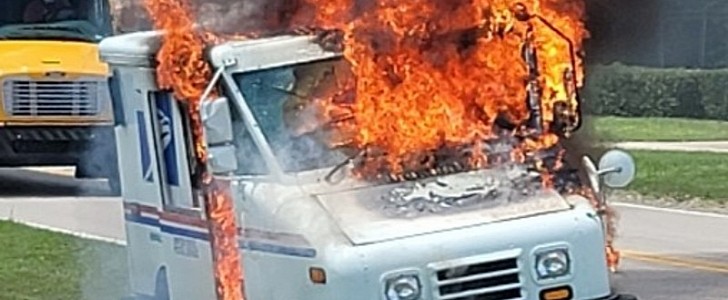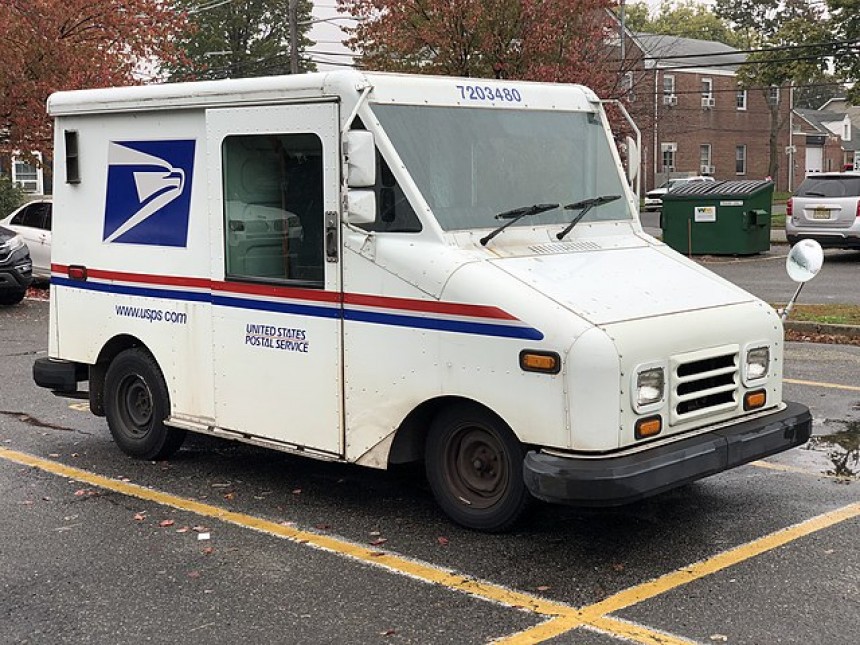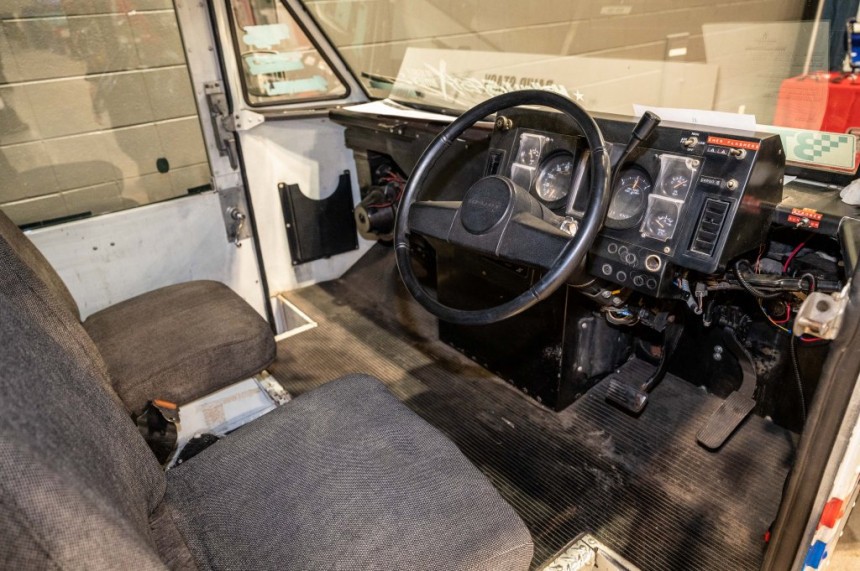Mail carriers have a pretty darn demanding job. They spend their days waking up at ungodly morning hours in rain, snow, or shine to bring our letters and packages. That said, who on Earth thought it was a good idea to let them drive an un-air-conditioned metal box for 40 years?
That's how long the Grumman Long Life Vehicle (LLV) has been in service, every single day since the mid-1980s. Considering the extreme conditions that come with the job, it's anyone's guess why it was so inadequate. To understand why the LLV was even devised in the first place, it's important to understand what mail carriers were driving around in before.
Generally, this task was delegated to the Jeep DJ, otherwise known as the Dispatcher. Designed by the builders of the Second World War Army Jeep, Willys Motors, the type served for 40 years in the postal services of the American and Canadian governments. These purpose-built mail Jeeps featured a robust rear-wheel-drive system and right-hand drive.
By the early 1980s, many of the older Jeeps in the North American fleet were starting to run on their last legs. What was needed was a cheap, easy to manufacture, decently reliable small box truck with the same attributes as the Dispatcher. More than a few design proposals passed the U.S. Postal Service's (USPS) desk before the competition's winner was announced.
Surprisingly, it was an aerospace manufacturer that wound up winning the contract. Based in Bethpage on Long Island, New York, Grumman is most famous for its "Cat" line of Navy fighters dating back to the Second World War. Famous names like the F4F Wildcat, F6F Hellcat, F-9 Cougar, and the F-14 Tomcat spanned 60 years of Naval aerospace development.
As the Cold War was coming to a close, Grumman sought more alternative means of turning a profit. Even from before, they tried their hands at canoe building of all things. But one of their more fruitful ventures was designing the body and the layout of the LLV. Major drivetrain components, as well as the frame, were borrowed from General Motors to help keep costs low.
The end result was a boxy-looking body with black steel wheels, the same Iron Duke four-cylinder engine found in the anemic Fiero sports car, and not much of anything else. No HVAC, just a dashboard-mounted fan. Working a shift in the blazing heat? Tough peanuts, lad. A foot and a half of snow on the ground? Throw some chains on the back tires and hit the road.
Underneath, the LLV used the same basic chassis as the S-10 pickup and Blazer SUVs in their two-wheel-drive configuration. Anyone who knows about the Iron Duke GM engine outside of its use in LLV knows its many horror stories. Stories of catching fire and burning Fieros to the ground due to a lack of lubrication from the undersized oil pan. This only happened a few hundred times with the LLV. Sounds like progress to us (not).
The engine was also a completely underpowered dog. An automatic GM transmission with only three speeds did little to help performance. Worse still, all too many USPS carriers were subject to brutal working conditions in the un-air-conditioned cabin. Concerns only grew as the 20th century turned into the 21st. But even 20 years later, this workhorse is still on the roads almost anywhere in America.
Over 100,000 LLVs are under the ownership of the USPS these days. Even with an all-electric replacement coming in 2023 from Oshkosh Defense, chances are pretty high this tin can with the spirit of a fighter jet isn't going away just yet.
Generally, this task was delegated to the Jeep DJ, otherwise known as the Dispatcher. Designed by the builders of the Second World War Army Jeep, Willys Motors, the type served for 40 years in the postal services of the American and Canadian governments. These purpose-built mail Jeeps featured a robust rear-wheel-drive system and right-hand drive.
By the early 1980s, many of the older Jeeps in the North American fleet were starting to run on their last legs. What was needed was a cheap, easy to manufacture, decently reliable small box truck with the same attributes as the Dispatcher. More than a few design proposals passed the U.S. Postal Service's (USPS) desk before the competition's winner was announced.
Surprisingly, it was an aerospace manufacturer that wound up winning the contract. Based in Bethpage on Long Island, New York, Grumman is most famous for its "Cat" line of Navy fighters dating back to the Second World War. Famous names like the F4F Wildcat, F6F Hellcat, F-9 Cougar, and the F-14 Tomcat spanned 60 years of Naval aerospace development.
The end result was a boxy-looking body with black steel wheels, the same Iron Duke four-cylinder engine found in the anemic Fiero sports car, and not much of anything else. No HVAC, just a dashboard-mounted fan. Working a shift in the blazing heat? Tough peanuts, lad. A foot and a half of snow on the ground? Throw some chains on the back tires and hit the road.
Underneath, the LLV used the same basic chassis as the S-10 pickup and Blazer SUVs in their two-wheel-drive configuration. Anyone who knows about the Iron Duke GM engine outside of its use in LLV knows its many horror stories. Stories of catching fire and burning Fieros to the ground due to a lack of lubrication from the undersized oil pan. This only happened a few hundred times with the LLV. Sounds like progress to us (not).
The engine was also a completely underpowered dog. An automatic GM transmission with only three speeds did little to help performance. Worse still, all too many USPS carriers were subject to brutal working conditions in the un-air-conditioned cabin. Concerns only grew as the 20th century turned into the 21st. But even 20 years later, this workhorse is still on the roads almost anywhere in America.








